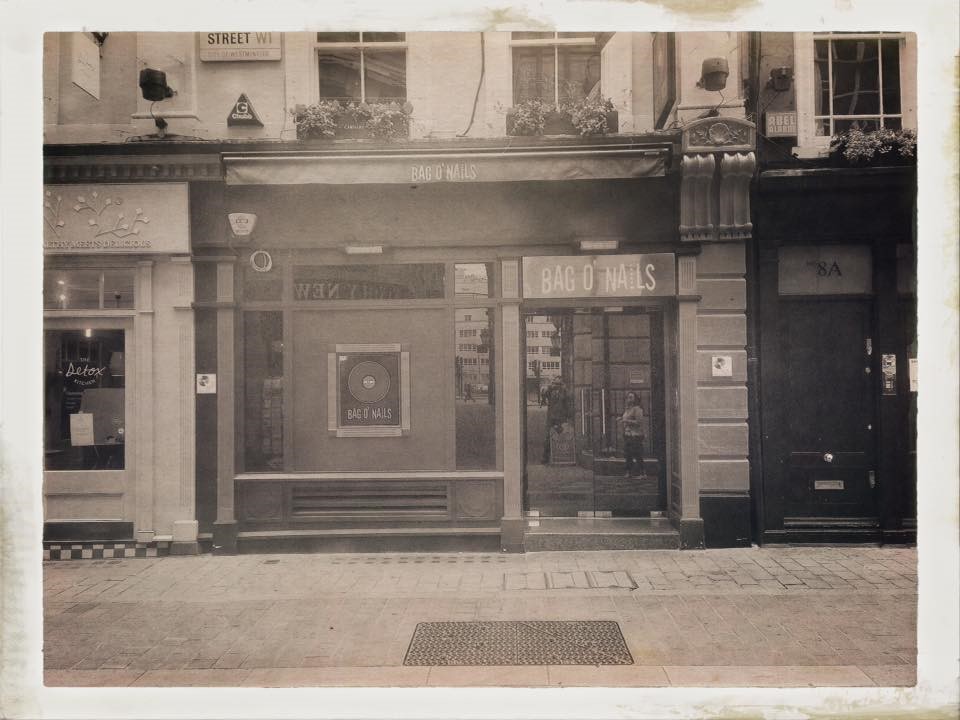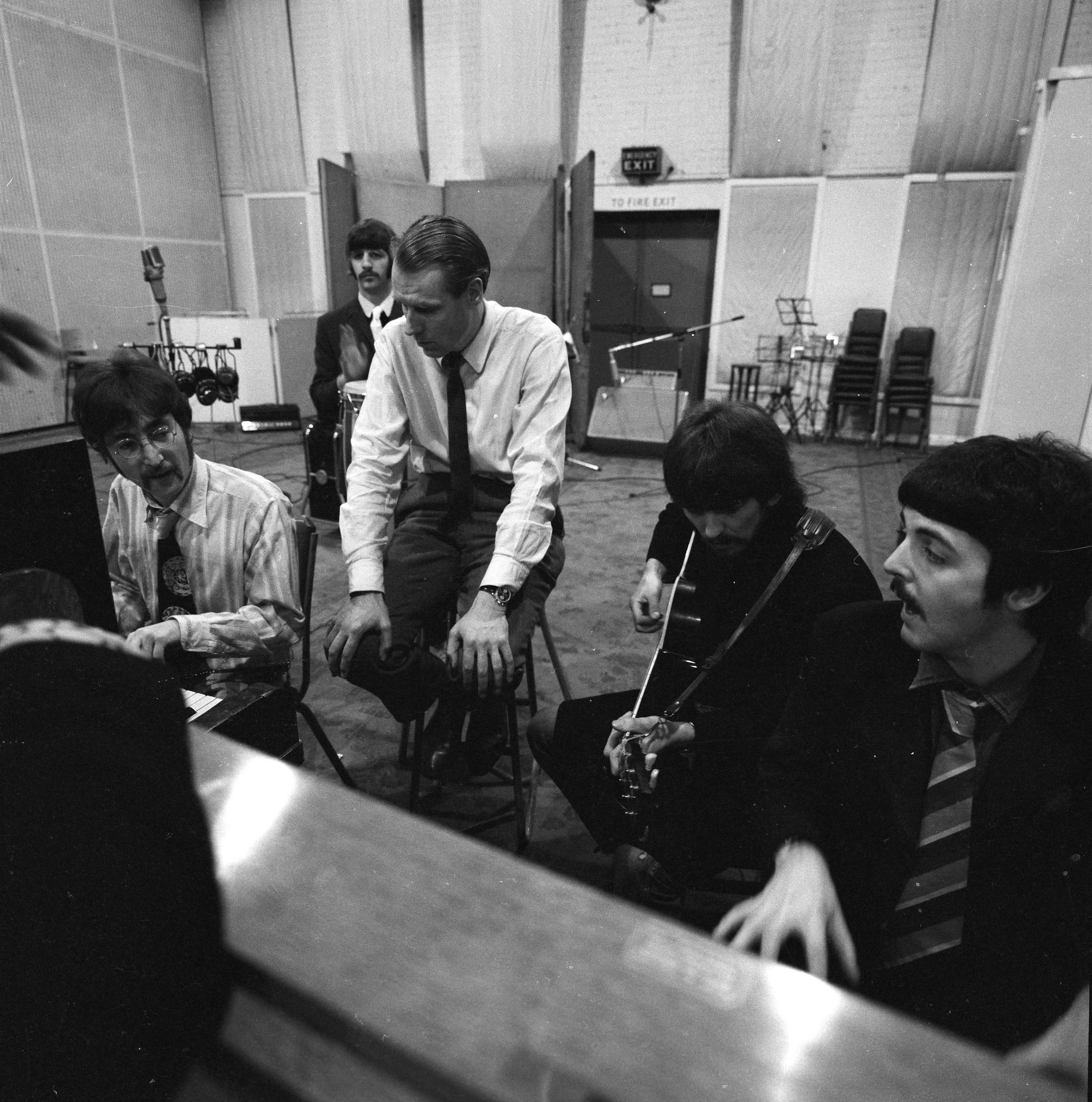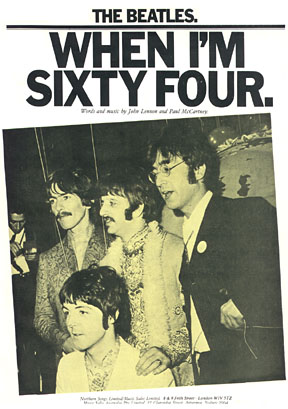Recording: Penny Lane, Carnival Of Light
Studio Two, EMI Studios, Abbey Road
The Beatles worked on two recordings during this session: their next single Penny Lane, and a long-unreleased piece known as Carnival of Light.
The session began at 7pm and finished at 12.15am the following morning. First of all, Paul McCartney re-recorded his lead vocals onto track three of the four-track tape, replacing the previous night's attempt.
With that completed to his satisfaction, The Beatles turned their attentions to an experimental piece which was recorded in a single take. It was given no official title, listed as Untitled on EMI's recording logs, although it later became known as Carnival Of Light.
In 1966 the design team Binder, Edwards and Vaughan painted a piano in psychedelic colours for Paul McCartney, who had met David Vaughan through a mutual friend, Tara Browne, the Guinness heir whose death in December 1966 partly inspired the lyrics of A Day in The Life.
That same month, Vaughan asked McCartney to contribute a recording for two events, to be promoted by the designers in the Roundhouse venue in Camden, London, on 28 January and 4 February 1967. The events were variously known as The Million Volt Light and Sound Rave or the Carnival of Light Rave.
McCartney agreed to make a recording for Vaughan, although the artist wasn't entirely impressed with the results.
Of all The Beatles' recordings, relatively little is known about Carnival Of Light. It came to public attention in 1988, with the publication of Mark Lewisohn's The Complete Beatles Recording Sessions.
Carnival Of Light lasted 13'48" and constituted the basic track along with a series of overdubs. During the recording McCartney briefly sang the as-yet-unrecorded Fixing a Hole on the piano, according to Dudley Edwards of Binder, Edwards and Vaughan.
Source: The Beatles Bible
"Track one of the tape was full of distorted, hypnotic drum and organ sounds; track two had a distorted lead guitar; track three had the sounds of a church organ, various effects (the gargling of water was one) and voices; track four featured various indescribable sound effects with heaps of tape echo and manic tambourine.
But of all the frightening sounds it was the voices on track three which really set the scene, John and Paul screaming dementedly and bawling aloud random phrases like 'Are you all right?' and 'Barcelona!'
Paul terminated the proceedings after almost 14 minutes with one final shout up to the control room: 'Can we hear it back now?'
Source: Mark Lewisohn
Carnival Of Light was also described by Barry Miles in Many Years From Now, his authorised biography of Paul McCartney. Miles reportedly played a part in the genesis of the recording.
The tape has no rhythm, though a beat is sometimes established for a few bars by the percussion or a rhythmic pounding on the piano. There is no melody, though snatches of a tune sometimes threaten to break through. The Beatles make literally random sounds, although they sometimes respond to each other; for instance, a burst of organ notes answered by a rattle of percussion. The basic track was recorded slow so that some of the drums and organ were very deep and sonorous, like the bass notes of a cathedral organ. Much of it is echoed and it is often hard to tell if you are listening to a slowed-down cymbal or a tubular bell. John and Paul yell with massive amounts of reverb on their voices, there are Indian war cries, whistling, close-miked gasping, genuine coughing and fragments of studio conversation, ending with Paul asking, with echo, 'Can we hear it back now?' The tape was obviously overdubbed and has bursts of feedback guitar, schmaltzy cinema organ, snatches or jangling pub piano, some unpleasant electronic feedback and John yelling, 'Electricity'. There is a great deal of percussion throughout, again much of it overdubbed. The tape was made with full stereo separation, and is essentially an exercise in musical layers and textures. It most resembles The Return Of The Son Of Monster Magnet, the twelve-minute final track on Frank Zappa's Freak Out! album, except there is no rhythm and the music here is more fragmented, abstract and serious. The deep organ notes at the beginning of the piece set the tone as slow and contemplative.
According to Lewisohn, a mono mix was made at the end of the session, which was then given by McCartney to Binder, Edwards and Vaughan on a reel of quarter inch tape.
When they had finished George Martin said to me, 'This is ridiculous, we've got to get our teeth into something more constructive." - Geoff Emerick
The Beatles' recording was played a number of times during the two Roundhouse events. Dudley Edwards has claimed that it was subsequently taken to America by Ray Anderson, who assisted with the events' light shows.
McCartney is believed to have wanted to include Carnival Of Light on Anthology 2, but the decision was vetoed by George Harrison. Since then, McCartney has occasionally mentioned a desire to see it released.





